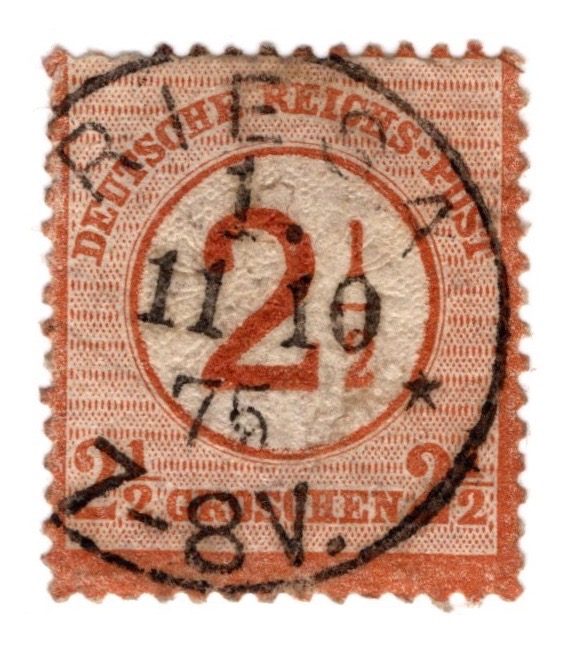The German Empire was formally declared by Prussia on May 4, 1871 from the miscellany of states once ruled by the Austrian Habsburgs. A loose confederation of 39 states had emerged from the aftermath of the Napoleonic era and it was the powerful northern state of Prussia, under the leadership of the ‘Iron Chancellor’, Bismarck, that led a unification of the German states.
The German Empire’s first adhesive stamps were issued in January 1872 with a design featuring an embossed German eagle within a circular medallion. The colourless embossed relief is surrounded by a coloured border inscribed with ‘DEUTSCHE REICHPOST’ (German State Post) across the top and the value below.
There were two sets of these stamps issued, one with denominations in taler and the other in gulden currency. Acknowledging that the empire was in its infancy, the taler series was intended for use in the North German Confederation territory while the gulden series was used in the grand-duchies of Baden and Hesse, the duchy of Saxe-Meiningen, and Sigmaringen, the province of Coburg in the duchy of Saxe-Coburg-Gotha. They were also used in the Prussian controlled districts of Frankfurt-am-Main and in the principality of Scwarzburg-Rudolfstadt.
The taler series was in denominations of ¼, ⅓, ½, 1, 2 and 5 groschen (30 groschen = 1 taler) while the gulden series was in denominations of 1, 2, 3, 7 and 18 kreuzer (60 kreuzer = 1 gulden). There are examples of the ½, 1, 2 and 5 groschen stamps as imperforate and the 2 groschen stamp has been recorded with the embossed eagle struck twice. Just two weeks after the eagle series was released, a pair of high value stamps was issued in the northern districts – 10 groschen and 30 groschen. These are rare and highly collectable stamps.

In July 1872, the Prussian State Printing Office made a new printing of the eagle stamp. These are distinguishable from the earlier issue as they feature a larger embossed eagle. These stamps were issued in the same denominations as the original series with additional 2½ groschen and 9 kreuzer values. There are numerous variations of colour in this latter series and imperforate examples of the 5 groschen are known. The 2½ groschen and 9 kreuzer stamps were released again in February 1874 with their values overprinted over the eagle for easier recognition.


A uniform decimal currency was introduced across the German Empire in 1875 based on the mark (100 pfennigs = 1 mark) and a new definitive issue released for use across both northern and southern districts. Whilst the currency had changed, the eagle motif was retained for denominations above 10 pfennigs.
To view postal issues of Germany, please visit the M&S Philately HipStamp store.

